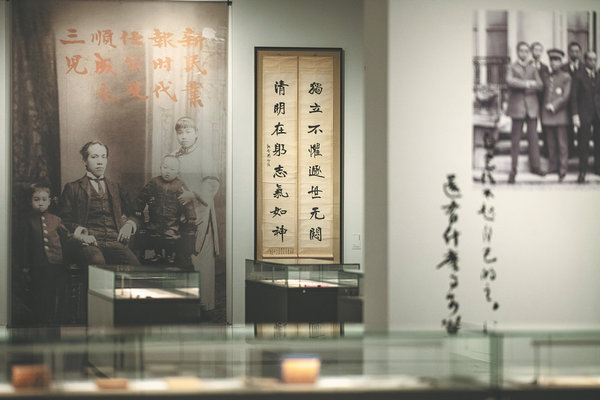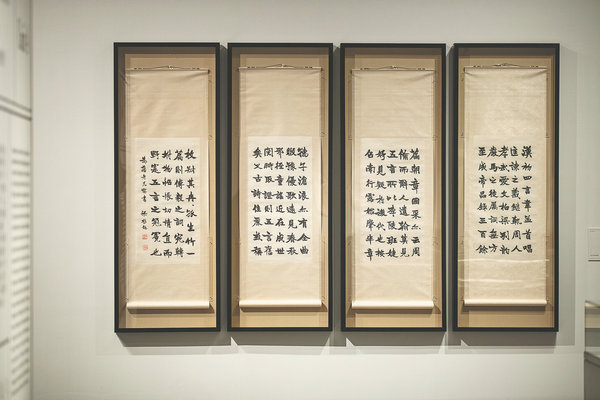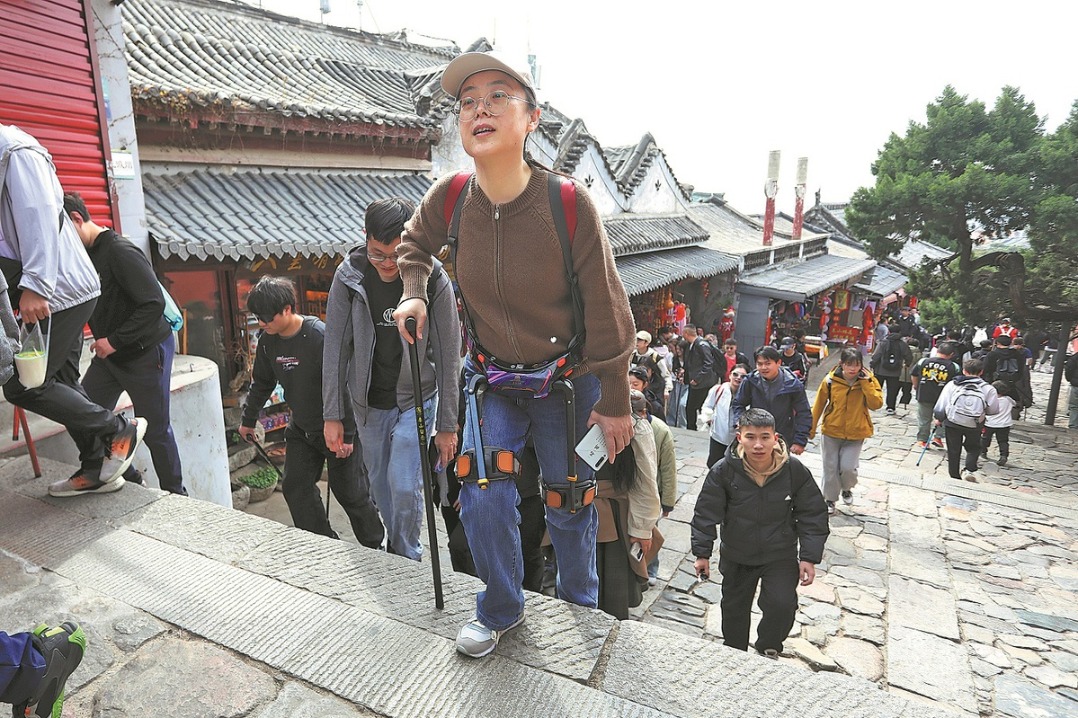A brush with history
By Lin Qi | CHINA DAILY | Updated: 2023-12-26 08:00

To her even greater surprise, Chen was in the showroom that day, providing a guided tour and a calligraphy demonstration to the audience. Zhuo joined the group and put forward her question about the accumulations.
"He told me, it (not following the rules) is totally fine; he said, when raising up the brush, try to forget these rules and regulations of how you should orchestrate the strokes correctly, and just focus on how to awaken your mind and give the full expression of your feelings on the paper," Zhuo recalls.
"I felt relief hearing his words. I had often felt tense when practicing, fearing I would make mistakes — it is funny because I practice trying to calm myself — but now I know how to write, truly, with ease."
Zhuo was not the only one enchanted by calligraphy that day.

As well as Chen's one-man exhibition, a separate exhibition, Purity and Glory, which marked the 70th anniversary of the Buddhist Association of China, was also creating quite a stir.
The exhibition displayed fine and rarely seen calligraphic works of important figures, such as Zhao Puchu, the former chairman of the Buddhist Association of China, and Hongyi, the master monk whose last piece of writing, done three days before his passing, was on display and drawing crowds of onlookers.
Days later, another calligraphy show, featuring the work of the great painter Liu Haisu, was opened at the National Art Museum of China to continue inspiring people's enthusiasm for the long-standing art of writing.
With an artistic legacy of thousands of years, Chinese calligraphy seems unlikely to lose its status in the heart of people, even in a time when handwriting has decreased sharply. It was, at one time, viewed by people as a high form of artistic worship at museums, while at other times, simply a practice so common that lovers of the art, both professionals and amateurs, would write on a daily basis.
























